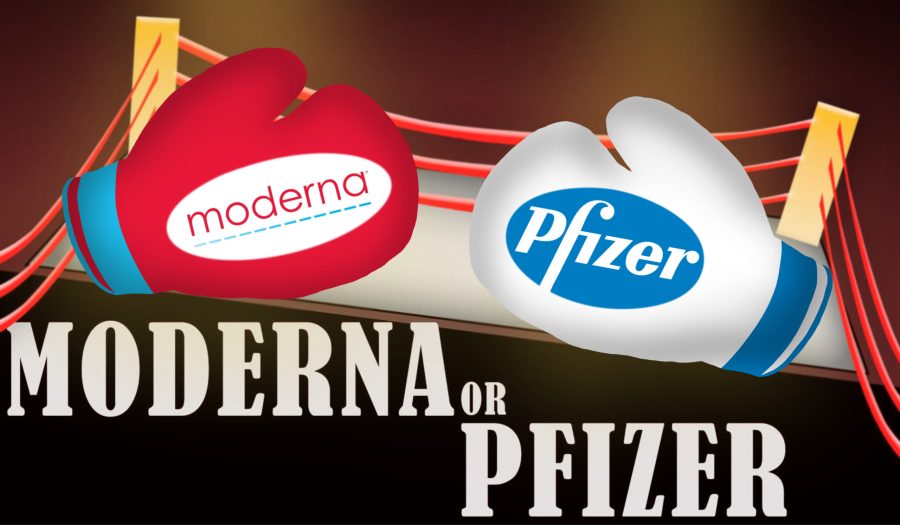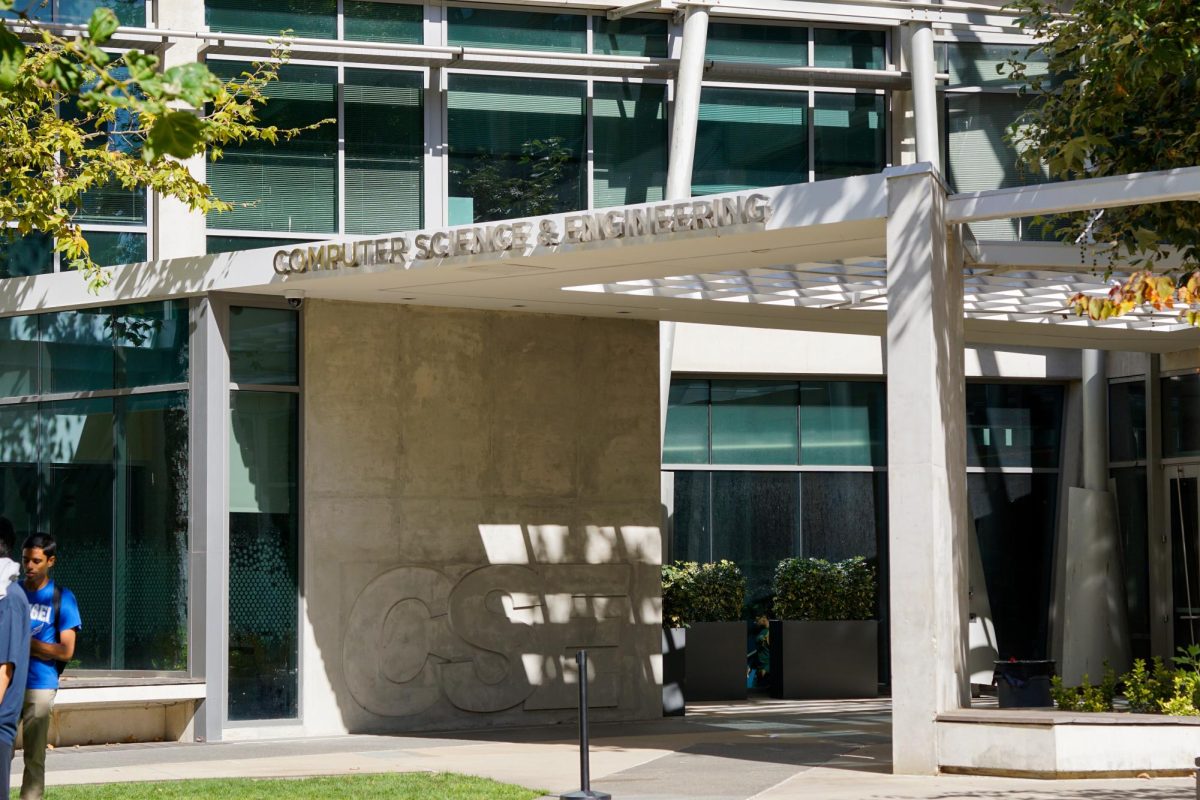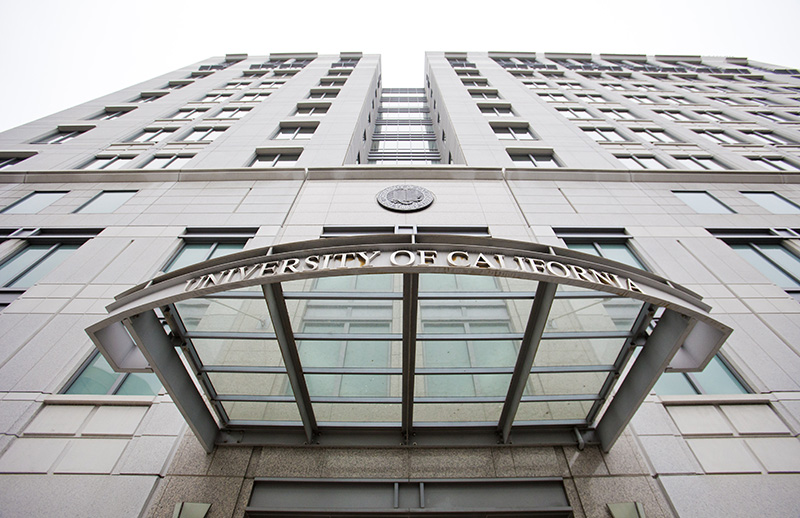Starting April 15, San Diegans 16 and up will be eligible to receive their first dose of the COVID-19 vaccine. In light of this announcement, many San Diego residents and Americans alike may be confused as to which vaccine they ought to choose. The UCSD Guardian has put together a list of the differences between the Moderna, Pfizer, and Johnson & Johnson vaccines to help people decide which one is right for them.
What is an mRNA vaccine?
Simply put, vaccines are designed to prime people’s immune systems against viral threats. It starts with an injection of the germ in a weakened or dead state which immediately alerts the white blood cells within one’s body. The human body then produces antibodies in the same way it would if it were infected by said disease, granting immunity to the disease without having to contract it within an infectious state.
Most vaccines available over the years contain a piece of the germ itself, but the two most popular COVID-19 vaccines, Pfizer and Moderna, are a bit different in how they function. Rather than being injected with a piece of the virus itself, mRNA of COVID-19 is administered in the vaccine and interpreted by the human body’s cells as a sort of blueprint. The strands of genetic material contain instructions for making different proteins, including SARS-CoV-2, the coronavirus that causes COVID-19.
Conversely, Johnson & Johnson’s viral vectored vaccine takes a more traditional approach to immunization. This vaccine injects a harmless adenovirus, which comes from the same family of viruses that cause the common cold, that then enters the human body’s cells and uses a certain code to prompt production for the SARS-2 spike protein.
In short, when someone receives a dose of a Pfizer or Moderna COVID-19 vaccine, they are not contracting the virus; rather, their cells are receiving genetic instructions on how to construct a weakened piece of SARS-CoV-2. This weakened replica of the virus that causes COVID-19 then prompts white blood cell production and immunity is achieved. Johnson & Johnson recipients are receiving a harmless virus that cues spike protein production.
Efficacy (How Effective They Are)
The Pfizer and Moderna vaccines have shown astonishing results with regards to efficacy early on in the screening process. On the other hand, Johnson & Johnson’s has acted as a sort of post-exposure prophylaxis, a type of short-term medicine administered after the disease has been contracted.
A Phase 3 study conducted by Pfizer Inc. and BioNTech SE on 927 confirmed symptomatic cases of COVID-19 found that the vaccine was 95.3 percent effective against severe COVID-19 cases, as defined by the U.S. Food and Drug Administration. The Moderna vaccine efficacy rates were slightly lower in clinical trials — about 86 percent – in people who are 65 or older. After the second dose, however, the Moderna vaccine had a 94.1 percent success rate, making it only marginally lower than the Pfizer vaccine’s rate.
In an interview with the Guardian, Sixth College freshman Sujit Tunuguntla said that vaccine efficacy was their primary reason for choosing the Pfizer vaccine.
“Personally, from what my parents told me, they told me to prefer Pfizer because it has a higher efficacy rate than Moderna,” Tunuguntla said. “I think that the first dose [of Pfizer’s vaccine] is significantly higher than Moderna’s… it was 95 percent versus 94.1 percent. It’s what I heard and was why I chose Pfizer.”
Comparing the efficacy of Johnson & Johnson’s vaccine with others is a bit more difficult due to one key difference in the third phase of the clinical test — the three companies were testing for different outcomes.
Johnson & Johnson was testing to see if one dose protected recipients against moderate to severe COVID-19 illness, which was defined as a combination of one positive test and at least one symptom such as a fever beginning from two to four weeks after a single shot. Johnson & Johnson was shown to be 85 percent effective in protecting recipients against severe disease after the 28-day period in which immunity developed.
It is not known if any of the aforementioned vaccines prevent asymptomatic transmission of the SARS-CoV-2 virus or if vaccinated people can spread the virus if they’re infected but don’t show symptoms. Because of this, the Center for Disease Control and Prevention recommends that vaccinated individuals maintain social-distancing and mask-wearing.
Reported Side-Effects
The Pfizer, Moderna, and Johnson & Johnson vaccines have similar side effect profiles. The most common side effects are injection site pain, muscle fatigue, fevers, and headaches and are more heavily observed within younger adults, who have more robust immune systems. In rare cases, Anaphylaxis, otherwise defined as severe allergic reactions, have been reported and treated effectively with epinephrine (the active ingredient in Epipens).
On the topic of side effects, the Center for Disease Control and Prevention stated that COVID-19 vaccines are safe and effective. All adverse reactions and events tracked by the center have been reported to the Vaccine Adverse Event Reporting System (VAERS). Anaphylaxis after COVID-19 vaccination occurred in approximately 2 to 5 people per million vaccinated in the United States based on the system, meaning that the immunization is safe and effective.
Accessibility
The Pfizer vaccine has been observed to be more difficult to distribute due to its strict requirements involving how the vaccine is stored. Once a shipment has been distributed to a point of use, the vaccines must be stored either in ultra-low-temperature freezers that can go as low as -94.1 degree Fahrenheit for six months, in refrigeration units commonly available in hospitals for five days, or in the Pfizer thermal shippers the doses arrive in for 30 days.
By contrast, Moderna can be stored at standard shipping and long-term temperatures (-4 degrees Fahrenheit) for six months. This makes Moderna incredibly simple to distribute and thus increases its accessibility. Additionally, the vaccine doesn’t require onsite dilution or special handling, which encourages vaccination across a wide range of locations ranging from doctor’s offices to pharmacies.
Jessica Lieban, a freshman at Eleanor Roosevelt College, was interviewed about how accessible vaccines were when she got vaccinated.
“Getting the vaccine was incredibly straightforward, I had no trouble getting it early since I qualify for it,” Lieban told the Guardian. “The primary reason I chose Moderna was because it was readily available in L.A. and the [differences] in efficacy rates were marginal.”
Johnson & Johnson’s vaccine does not require excessive refrigeration when being distributed, meaning that they can be administered anywhere from pharmacies to mass vaccination sites. Additionally, it can be stored at room temperature — no more than 77 degrees Fahrenheit — for 12 hours when the vaccines haven’t been opened. After the first dose is withdrawn, the storage vial can be kept in a fridge for six hours or at room temperature for two.
In light of the COVID-19 vaccines high efficacy rates, limited side effects, and remarkable accessibility, medical experts like Dr. Stephen Spector, Chief of the Division of Pediatric Infectious Diseases at UC San Diego, urges eligible recipients to get the vaccine as soon as possible.
“What you always look for in medicine is risk-benefit; what is the risk of the vaccine versus the benefit,” Spector said. “The anaphylaxis reactions have been observed in 1 to 200,000 recipients, and the benefit [of the vaccine] is clear for all age groups and all people.”
Where do I schedule my appointment?
All soon-to-be eligible groups may use California’s vaccine notification and scheduling system MyTurn on April 15. Residents may be able to schedule appointments sooner at vaccine sites that use other scheduling systems, according to a representative for the California Department of Public Health.
These alternative sites are offered by the County of San Diego’s website and through the CDC-endorsed VaccineFinder site, which directs users to local pharmacy chains and supermarket pharmacies that are offering vaccinations.
Students and employees of UC San Diego are encouraged to wait until they are invited by the UCSD Health Department so as to avoid overloading their system. Eligibility notifications will be delivered through a telephone call or via MyUCSDChart.
Artwork courtesy of Ava Bayley for The UCSD Guardian.
This article was updated on 4/11 at 4:55PM to clarify comments made by the student interviewed for this piece.














Elisabeth • Apr 15, 2021 at 6:53 am
This is valuable information, and I am grateful to you. People are actually experiencing too much anxiety about the pandemic. Various means of THC allow you to get rid of this kind of experience. Now you can buy delta 8 online and no longer think about this problem
Ron Ruiz • Apr 12, 2021 at 8:34 pm
Very informative !
Always good to learn!
Mary Ruiz • Apr 12, 2021 at 8:29 pm
Thank you Jose! This article clarifies each vaccine and I appreciate your thorough research.